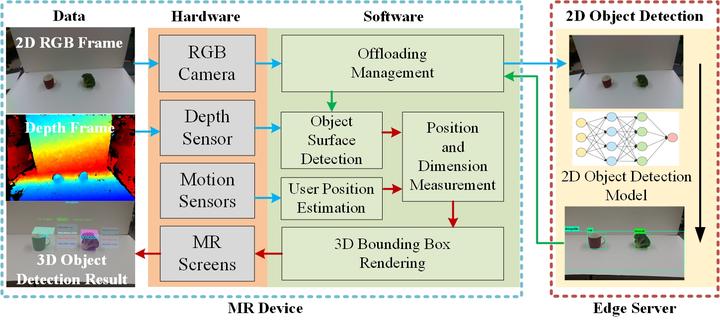 System Overview
System OverviewAbstract
Mobile headsets should be capable of understanding 3D physical environments to offer a truly immersive experience for augmented/mixed reality (AR/MR). However, their small form-factor and limited computation resources make it extremely challenging to execute in real-time 3D vision algorithms, which are known to be more compute-intensive than their 2D counterparts. In this paper, we propose DeepMix, a mobility-aware, lightweight, and hybrid 3D object detection framework for improving the user experience of AR/MR on mobile headsets. Motivated by our analysis and evaluation of state-of-the-art 3D object detection models, DeepMix intelligently combines edge-assisted 2D object detection and novel, on-device 3D bounding box estimations that leverage depth data captured by headsets. This leads to low end-to-end latency and significantly boosts detection accuracy in mobile scenarios. A unique feature of DeepMix is that it fully exploits the mobility of headsets to fine-tune detection results and boost detection accuracy. To the best of our knowledge, DeepMix is the first 3D object detection that achieves 30 FPS (i.e., an end-to-end latency much lower than the 100 ms stringent requirement of interactive AR/MR). We implement a prototype of DeepMix on Microsoft HoloLens and evaluate its performance via both extensive controlled experiments and a user study with 30+ participants. DeepMix not only improves detection accuracy by 9.1–37.3% but also reduces end-to-end latency by 2.68–9.15×, compared to the baseline that uses existing 3D object detection models.